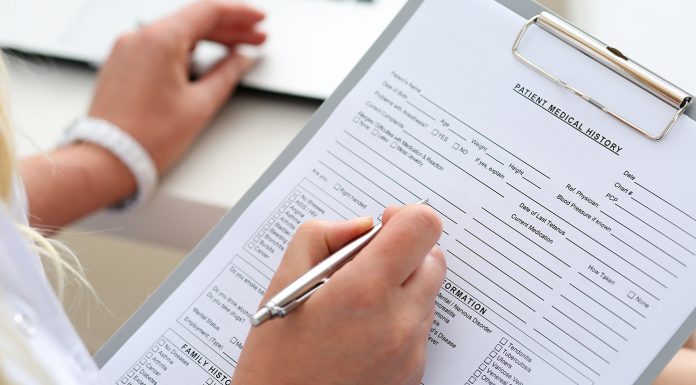Margareth Broodkoorn, director of nursing at Northland District Health Board, says the motivation behind the strategy is patient safety not being punitive to staff.
Waikato District Health Board has been consulting about bringing in a similar policy for its staff as the country prepares for what some fear could be a bad influenza season after new strains emerged over the northern hemisphere winter.*
Auckland DHB, which has the highest nurse flu vaccination rate in the country, is this winter asking nurses who chose not to get vaccinated to ‘consider’ wearing a surgical mask when treating high-risk vulnerable patients during an influenza epidemic.
The policy of requiring frontline staff – who either choose or in rare cases are medically unable to have an influenza vaccine – to wear masks when working with patients during the ‘flu season was adopted several years across the Canadian province of British Colombia to counter low staff uptake of vaccination.
Lance Jennings, a virologist and spokesperson for the national Influenza Specialist Group said the British Colombia policy faced legal challenges from unions but lead to vaccination levels rising from 40 per cent to 75 per cent in the first year and up to 86 per cent last winter. (See other Newsfeed story for New Zealand’s current health care worker vaccination rates)
Broodkoorn says it had slowly introduced its flu season requirement for unvaccinated frontline staff to wear masks when caring for initially in just high risk patient areas– like maternity and child health and the elderly – during the last two winters.
She said she had worked closely with the New Zealand Nurses Organisation through the bipartite action group meetings on introducing the policy and the local union understood and supported the strategy.
But responses from individual nurses and midwives had been varied with some concerned about the stigmatisation of wearing a mask and having to explain to families why.
“So I worked with these staff and said it is your decision whether you want to have a vaccination or not (you may have a medical reason why that’s the case) but we want to be able to provide some safeguards for our patients,” said Broodkoorn. “You may not be sick yourself but there is a risk you may infect patients.”
She said the policy had lead to an near doubling of the flu vaccination uptake in midwives in 2013 (from 37% to 73%) and when the policy widened to more high risk areas last year, including emergency department it had lead to ‘flu vaccine uptakes of more than 80 per cent in those wards. But overall the DHB’s staff vaccination rate rose from 51 per cent prior to the policy to 57 per cent last winter.
This year the decision has been made to extend the policy to cover all clinical areas including outpatients and community nursing.
“So the message is that if you are unable to have the vaccination for medical reasons or choose not to that is your prerogative,” says Broodkoorn. “But in terms of not infecting our patients we are requiring staff to wear masks when in direct patient contact.”
Lesley Harry, industrial advisor for the NZNO said it had not had any adverse reports from members at Northland DHB about its initial mask policy for high risk and vulnerable patients. But there had been some concerns expressed about poor communication during the Waikato DHB’s policy consultation process.
Harry said there also remained questions over the practicality of a mask policy for all clinical areas as “to be truly effective masks need to be worn by everybody” coming into a health service including visitors. She added NZNO was pro-active in promoting vaccination and as an organisation was not anti-vaccination in “any way shape or form”.
Waikato to decide policy soon
Sue Hayward, director of nursing at Waikato DHB whose chief executive until last year ran a British Columbian health authority, said the feedback on its proposed mask policy was being collated this week and a final policy was due to be announced very shortly.
“‘To be fair it has generated a great deal of discussion which is good because it highlights the pros and cons of vaccinations and to why health professionals would or would not want to be protected.” The Waikato DHB nurse flu vaccination rate last winter was 53 per cent, the midwife rate 33 per cent and the rate for all staff was 58 per cent.
Hayward believes the mask policy is a good concept. “For one because it provides a physical reminder for patients that actually the person looking after them may or may not be carrying the influenza virus which means they may or may not be at risk.”
Hayward said Waikato four years ago started focusing on ward-based vaccination and initially had just 12 ward-based vaccinators but this year had trained 100 – most of them nurses.
“I’m hoping that because we have increased the commitment from nurses already (to vaccination) that that groundswell to making sure they are safe to practice physically will mean we are seeing an increase in uptake.”
Hayward doesn’t think a mask policy would hinder unvaccinated nurses practice, as “it is very easy to wash your hands and put on a mask”
When it came to stigma she said wearing a mask would be a physical indication that a person has decided not to be vaccinated and for those rare people who were medically unable to be vaccinated the wearing of a mask would protect them as well as their patients.
*The delivery of the influenza vaccine for the New Zealand winter was slightly delayed to ensure it also covered the new strains that emerged during the Northern Hemisphere flu season: A/Switzerland (an H3N2 strain) and B/Phuket.





















